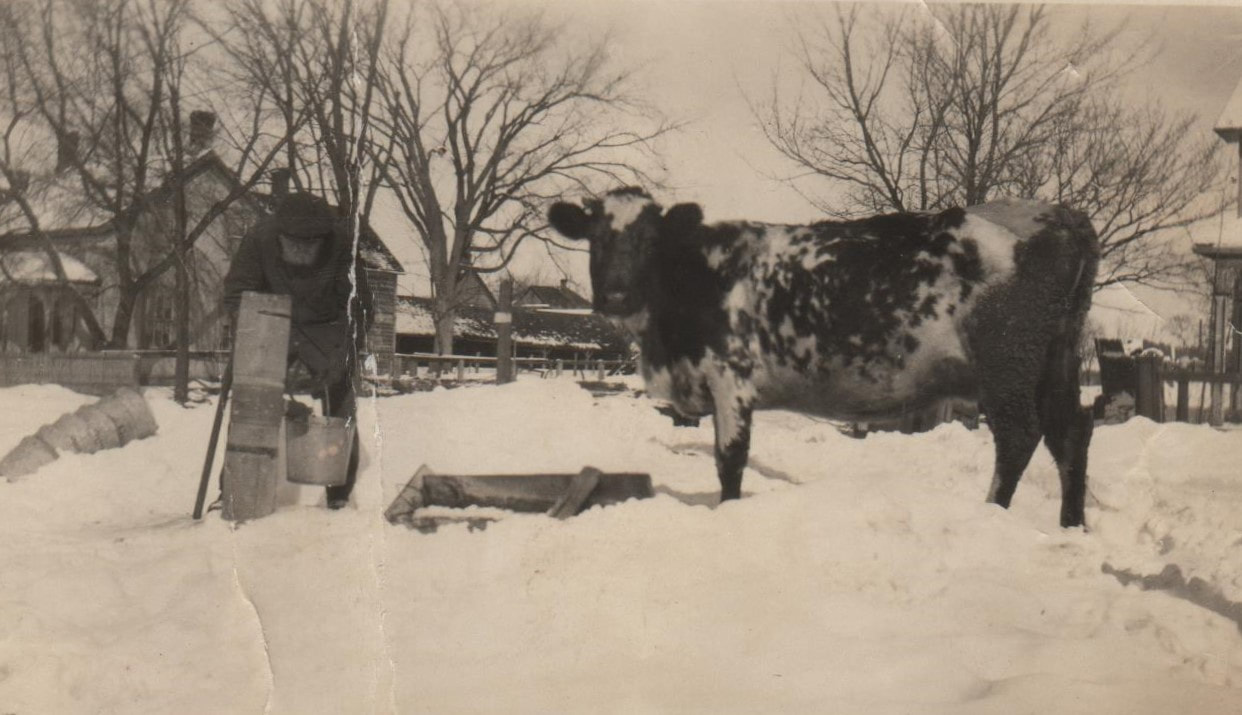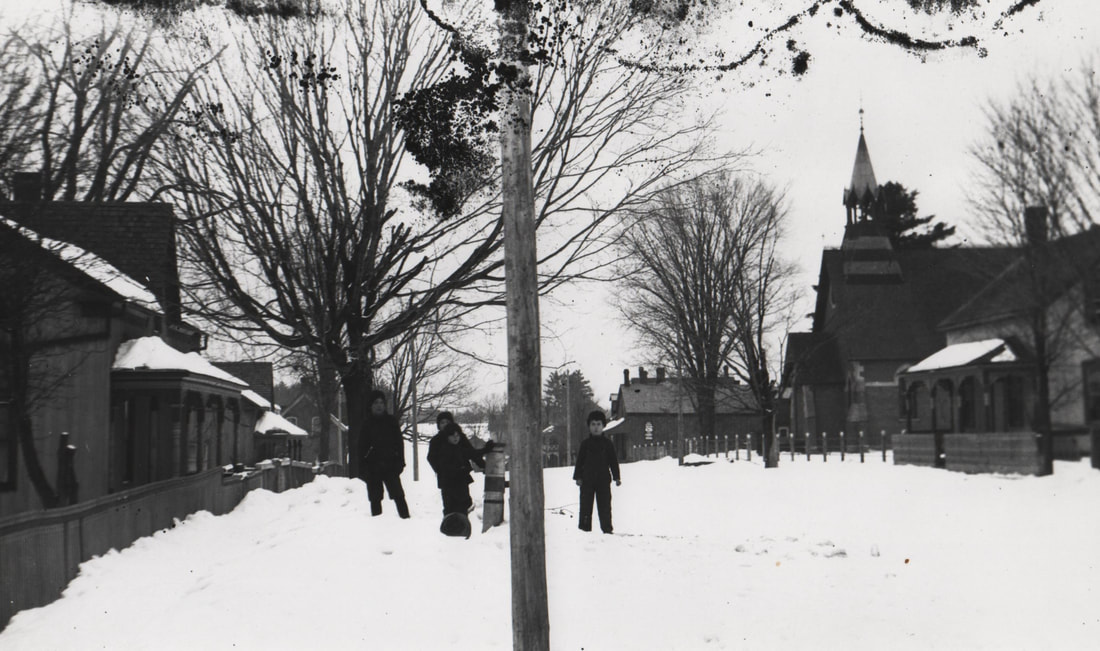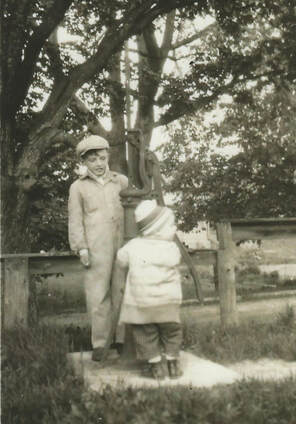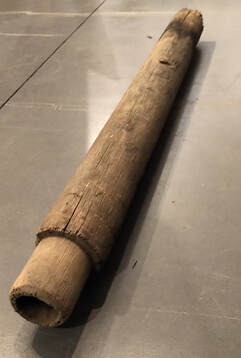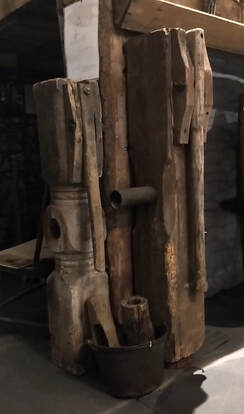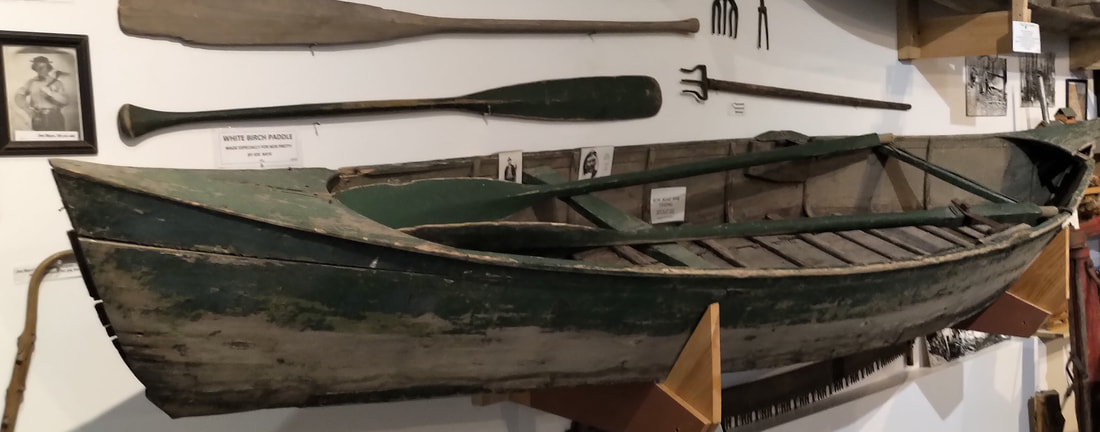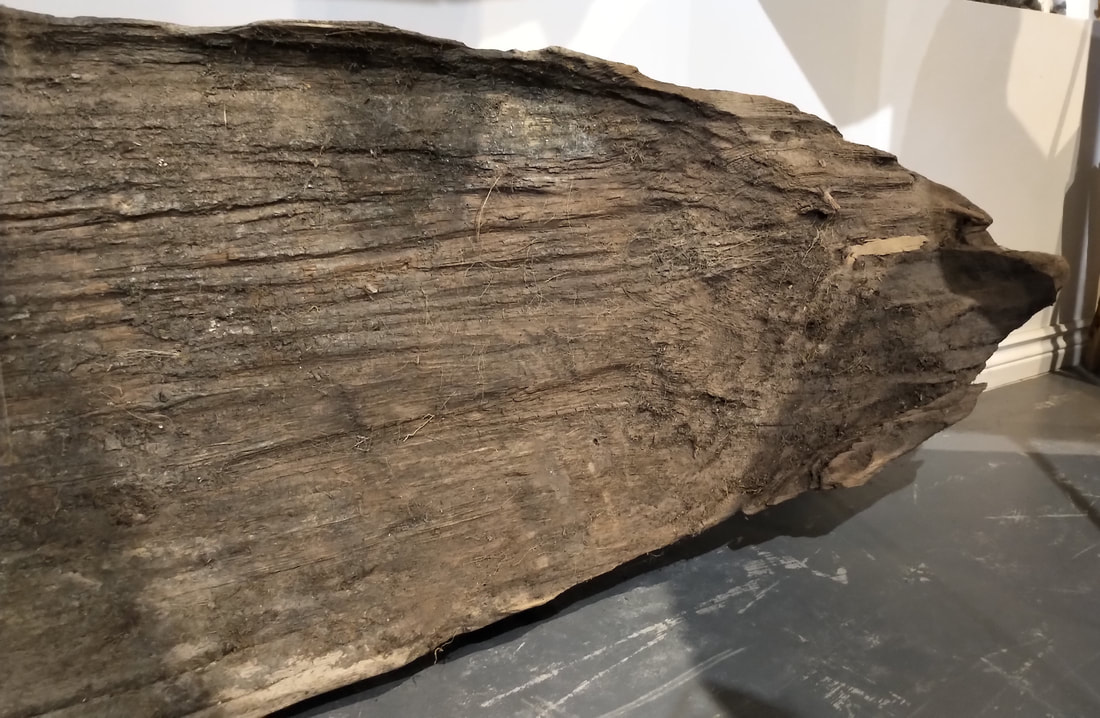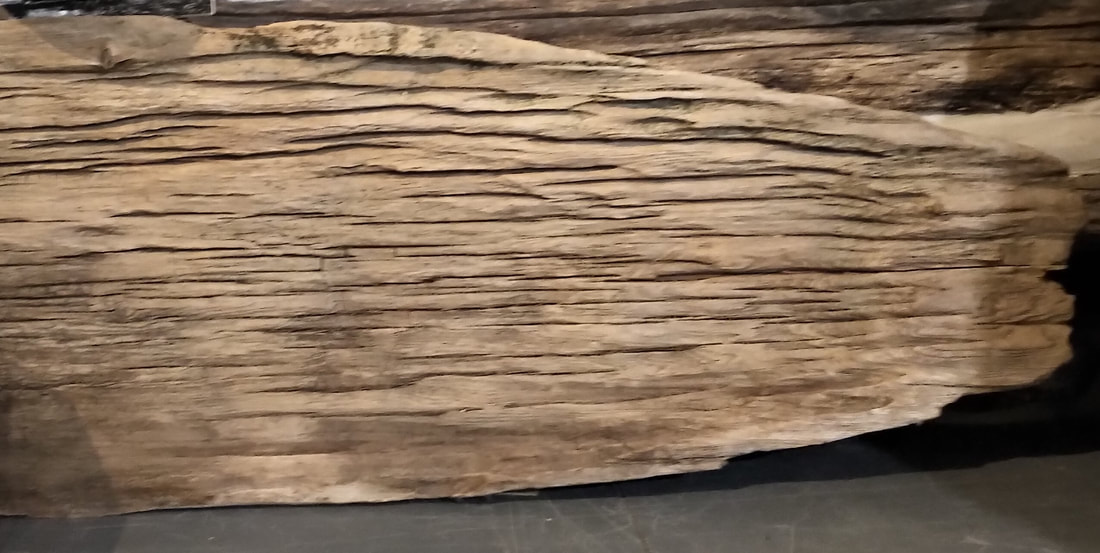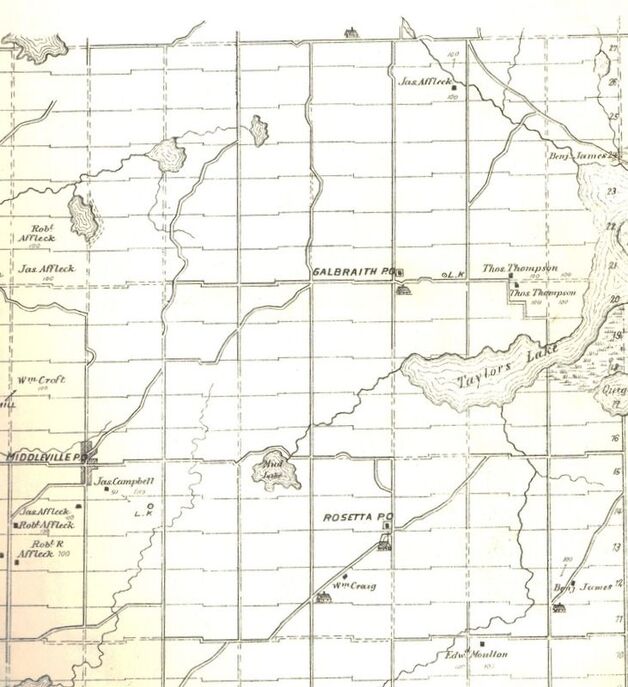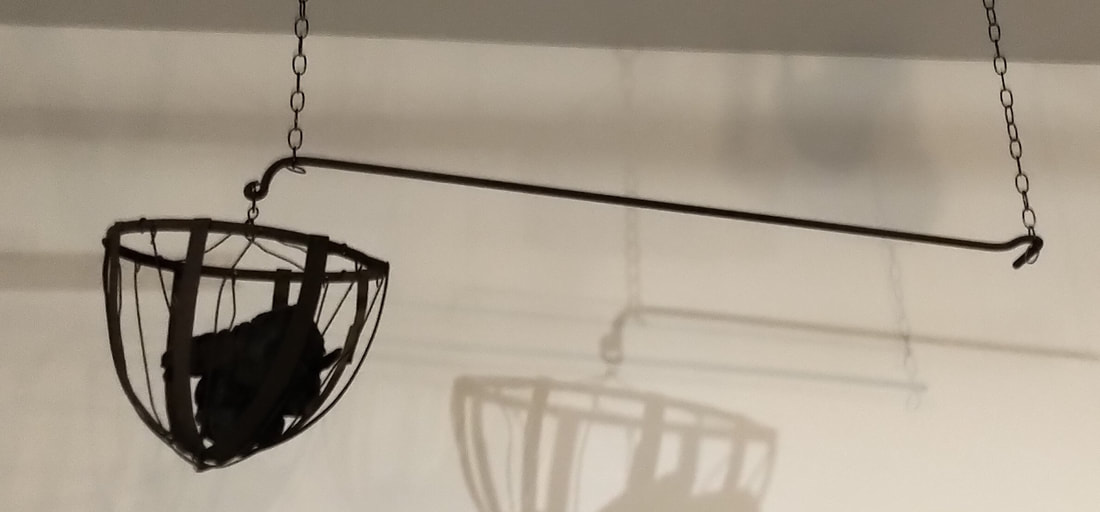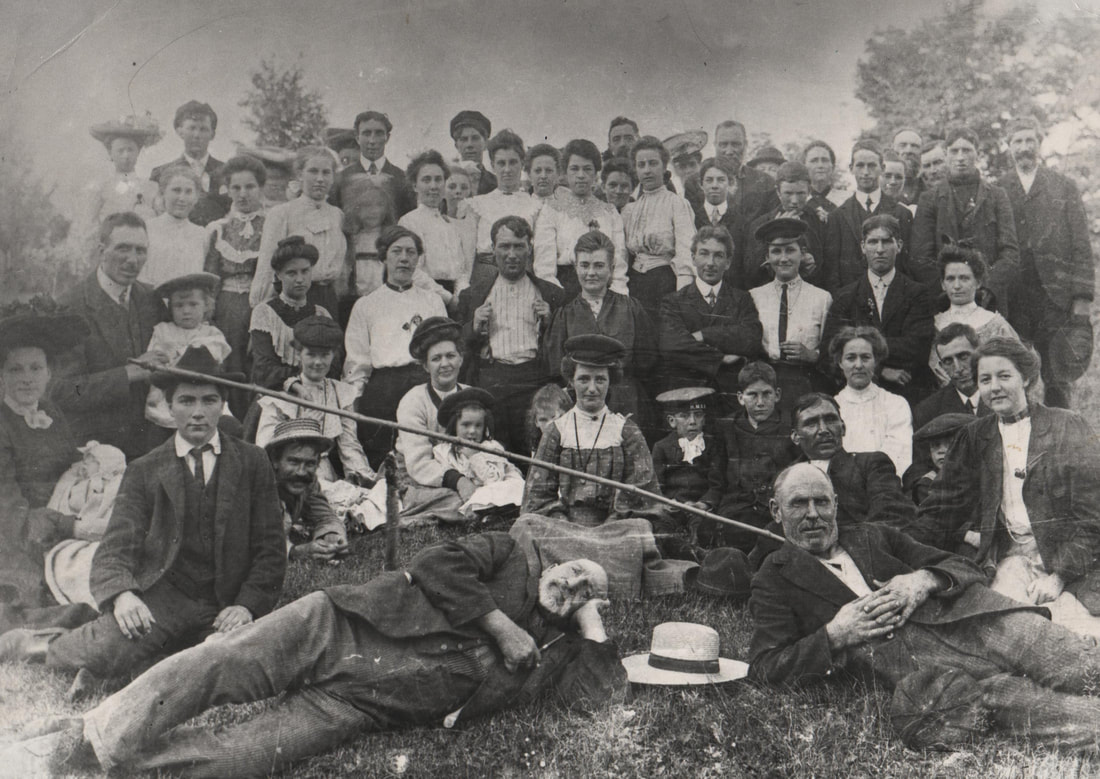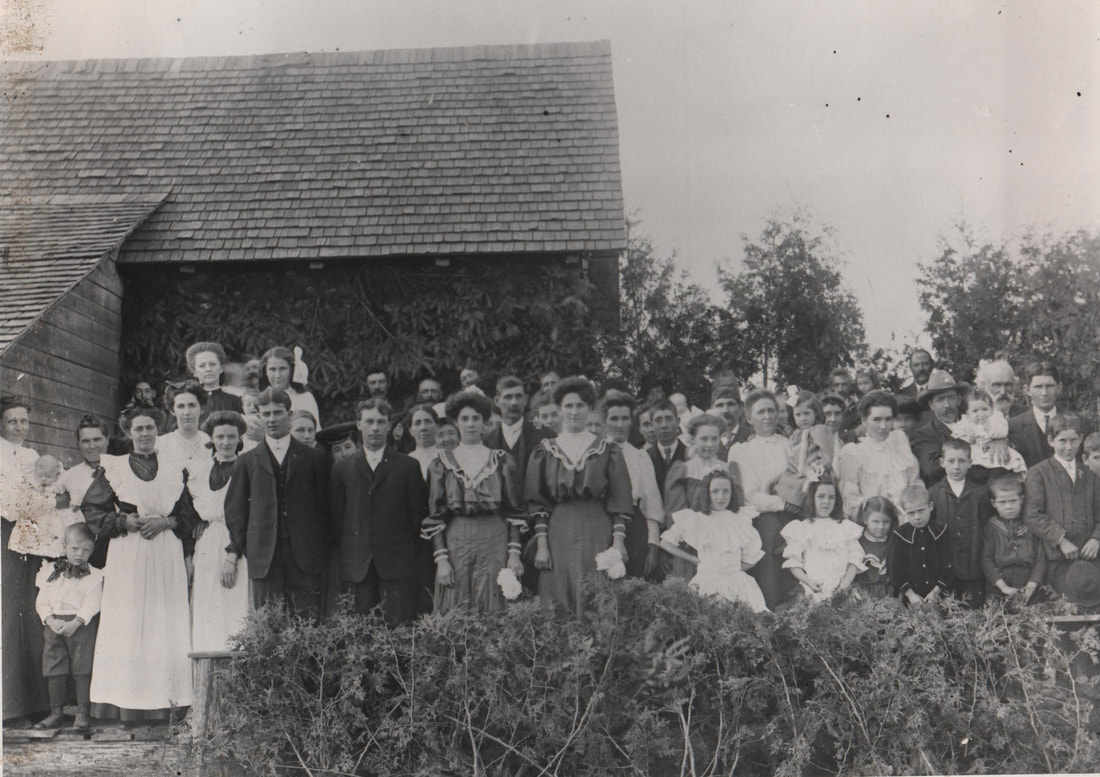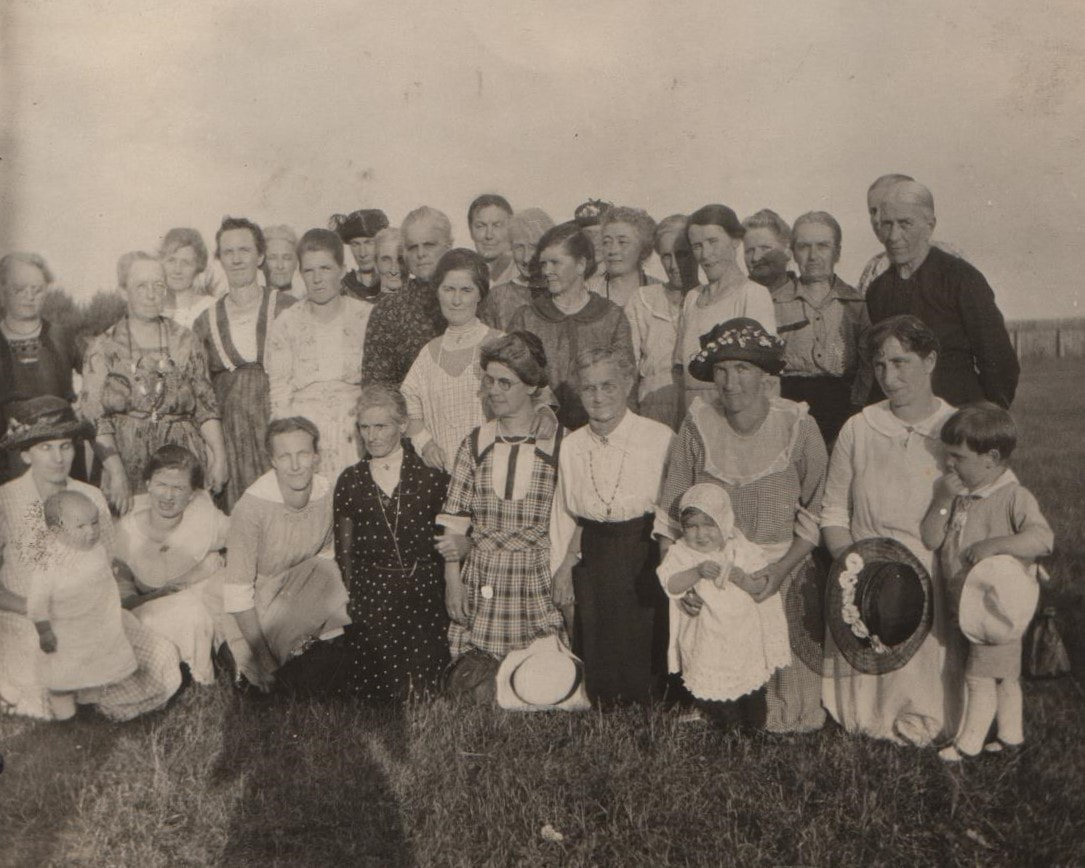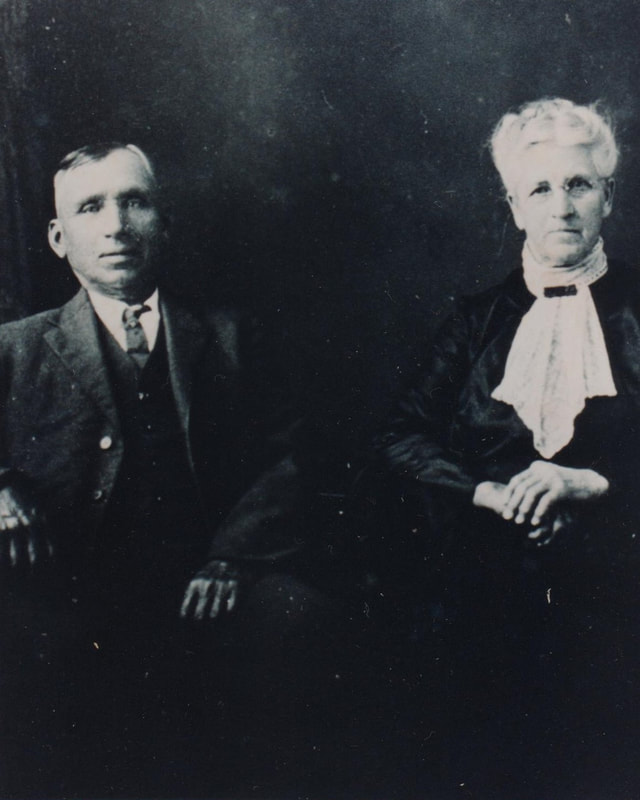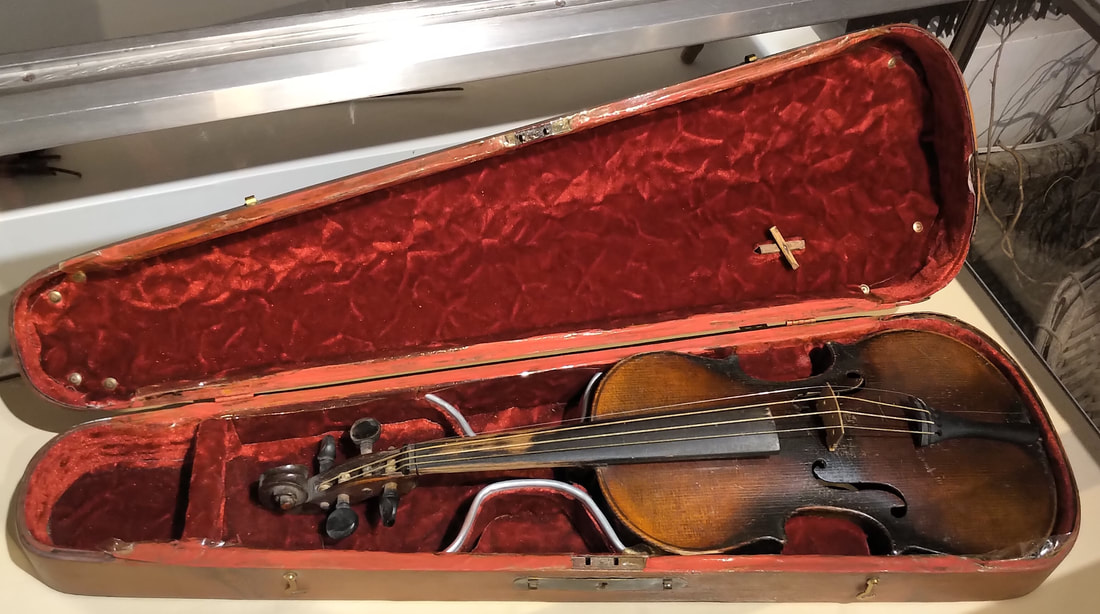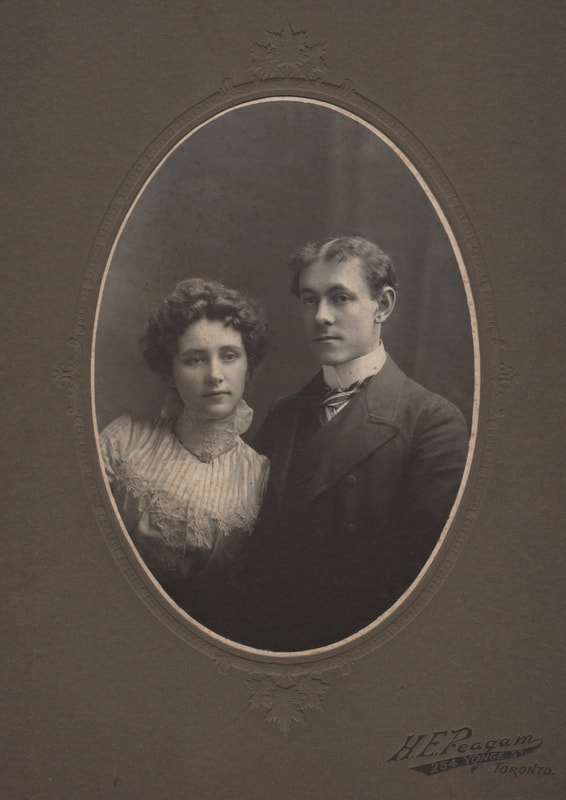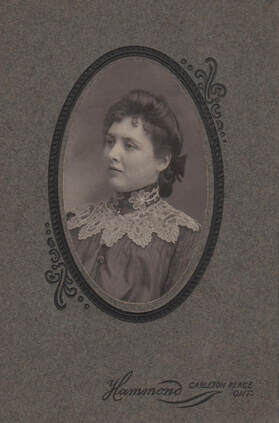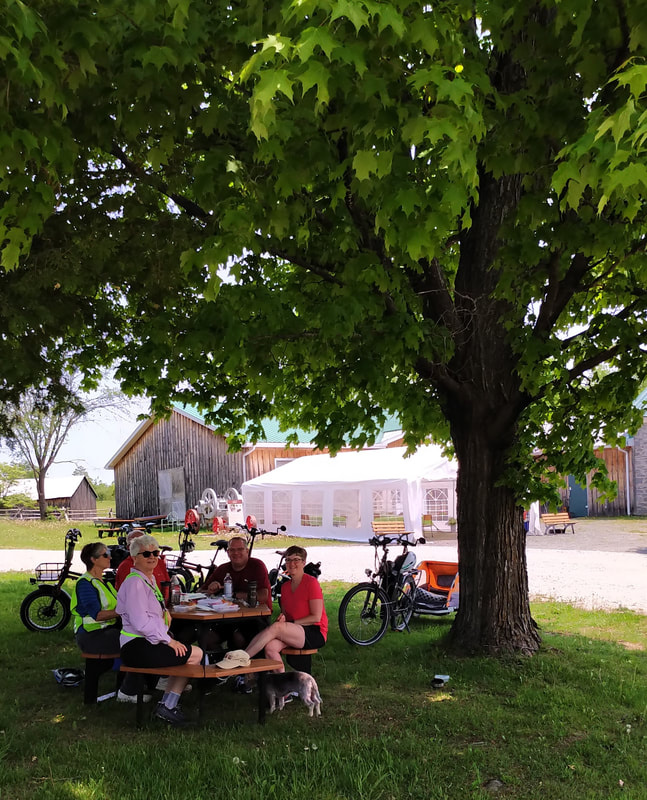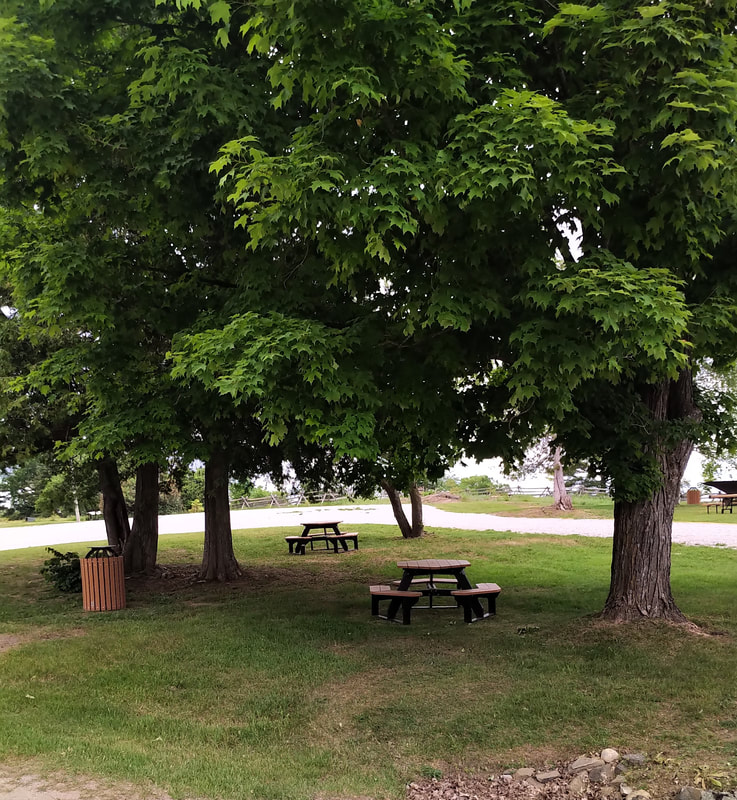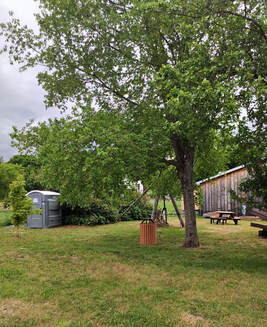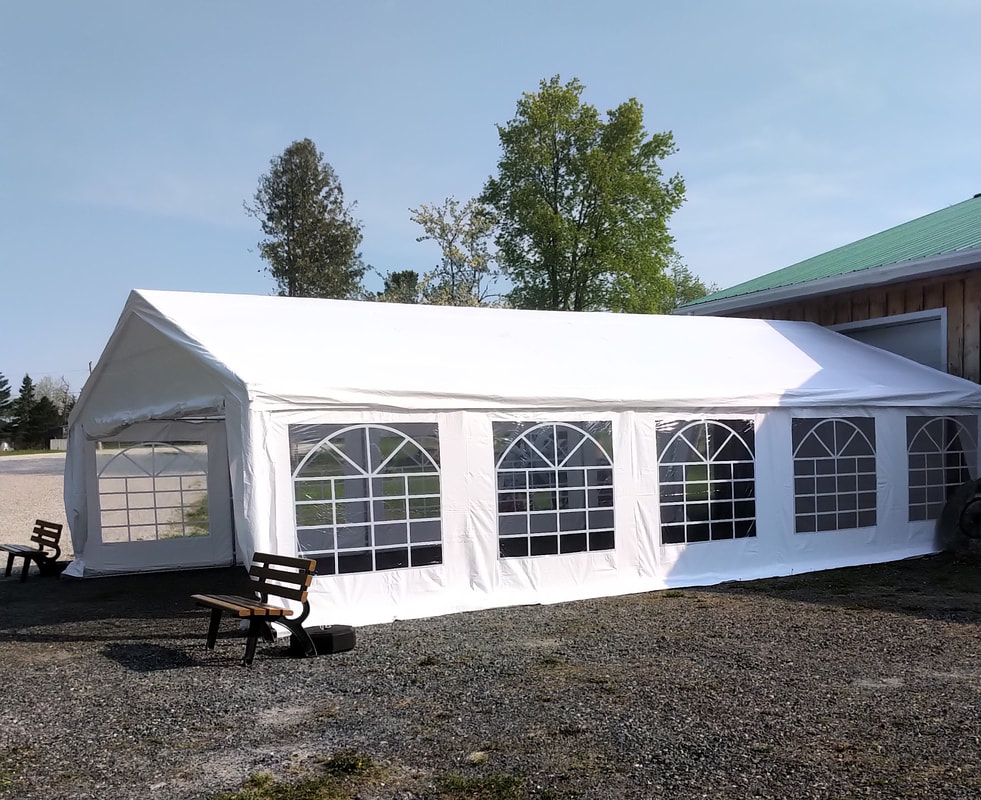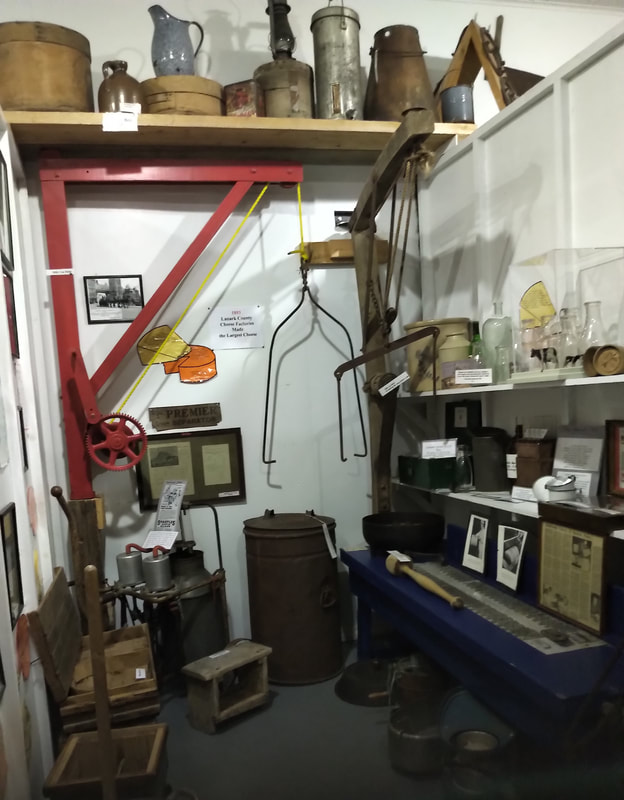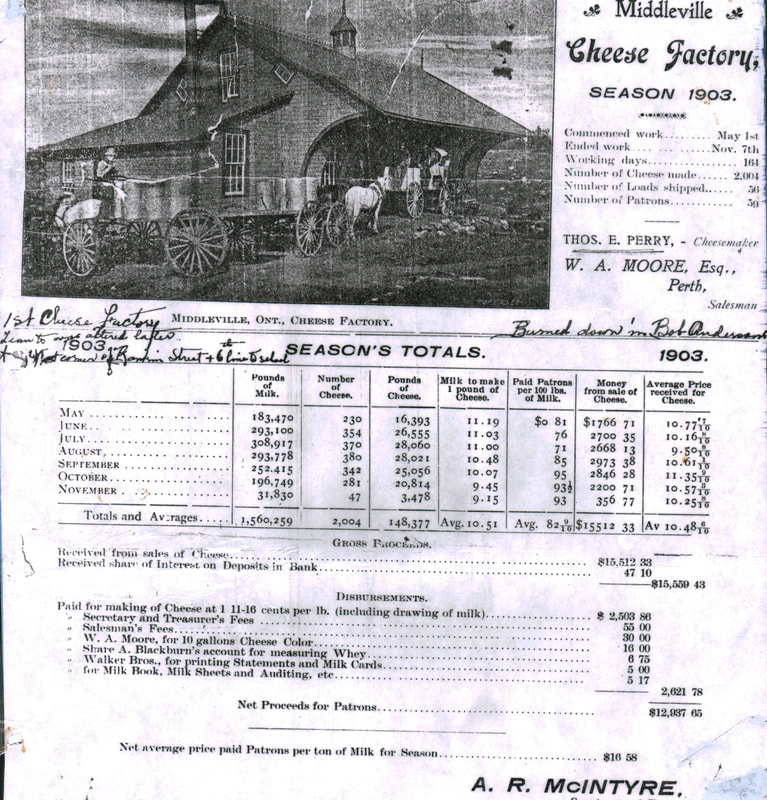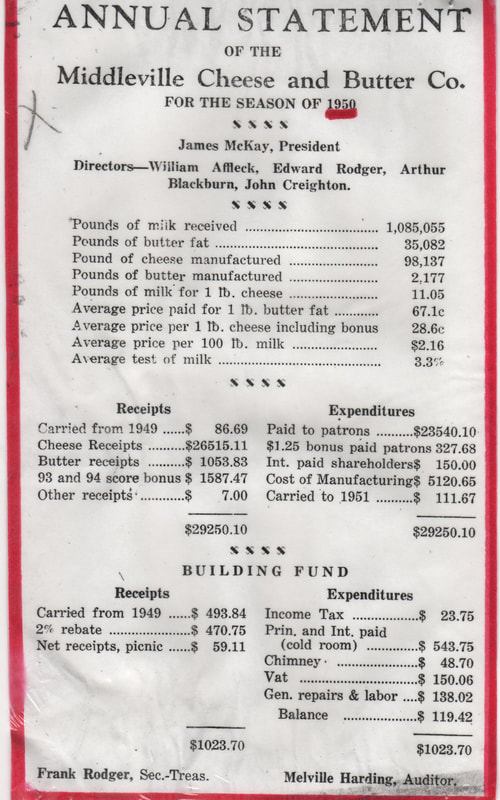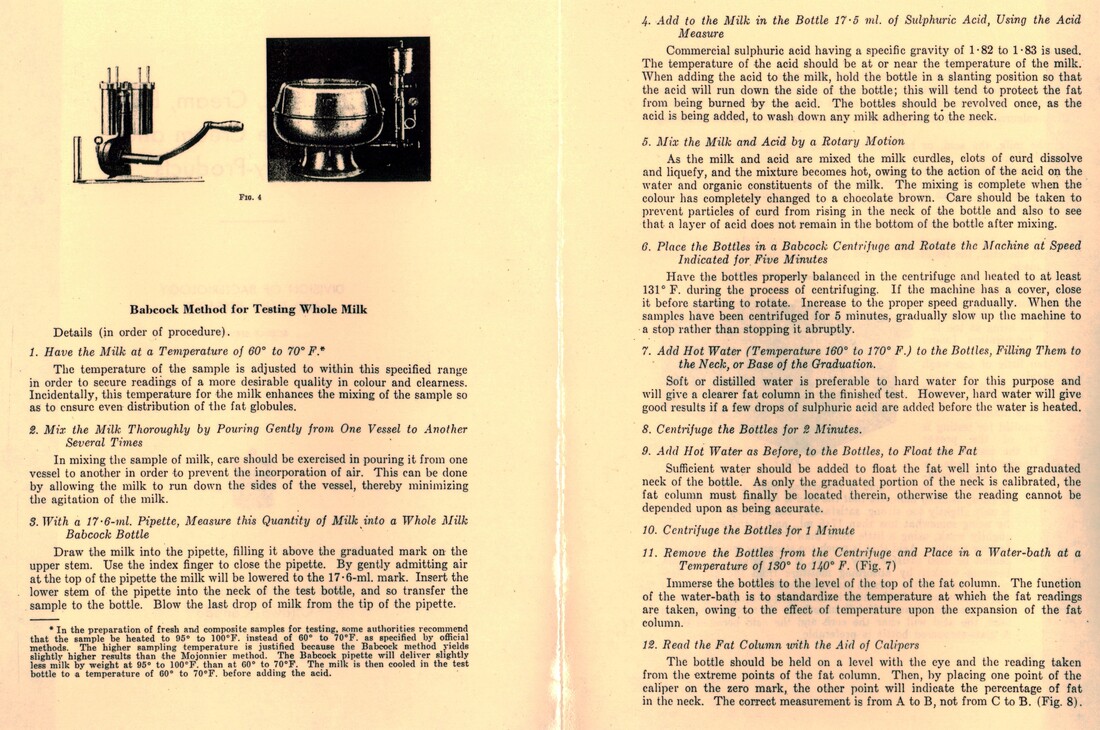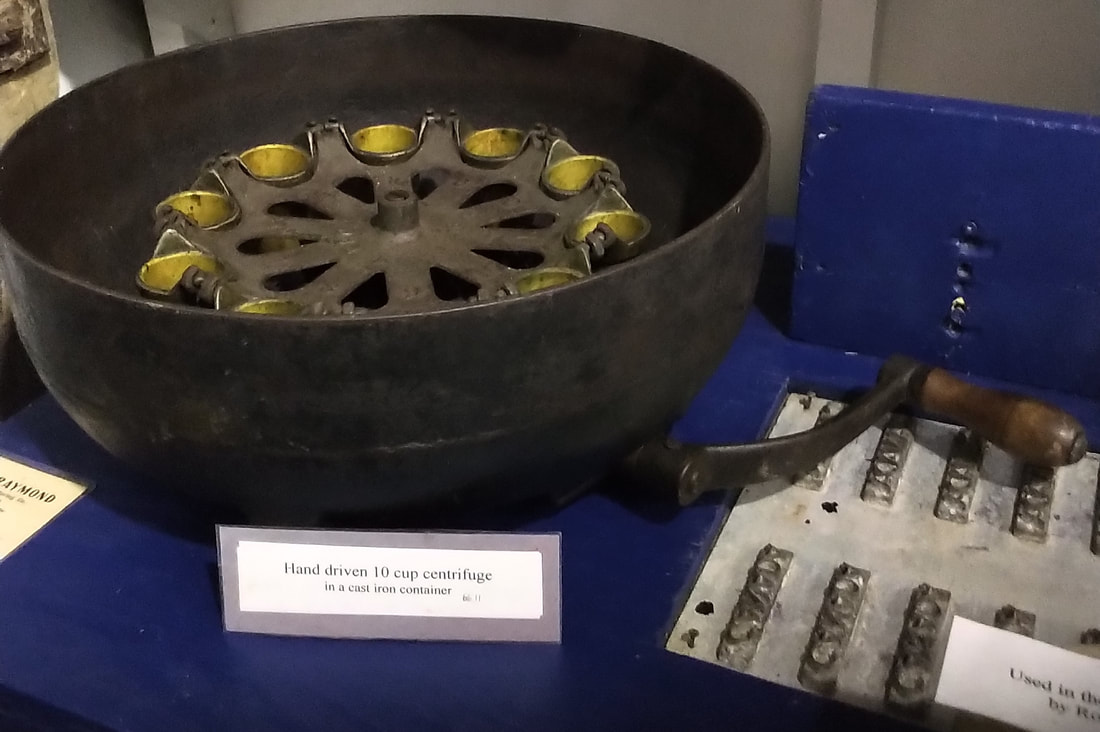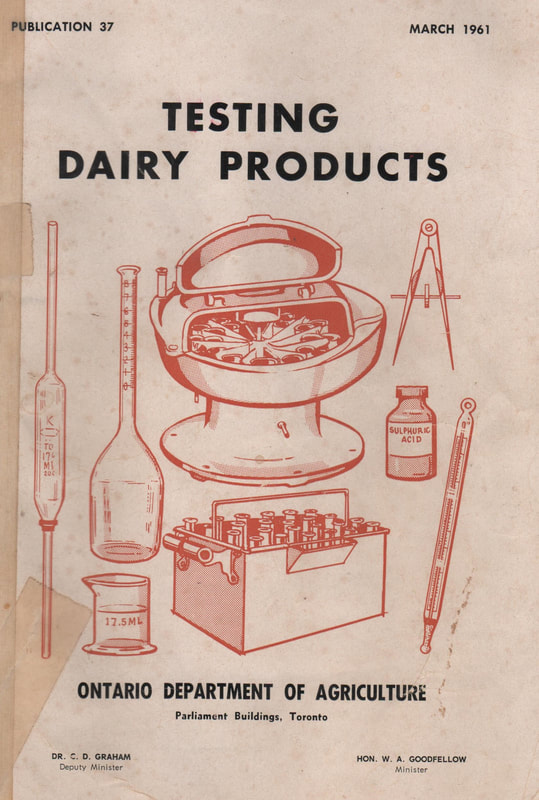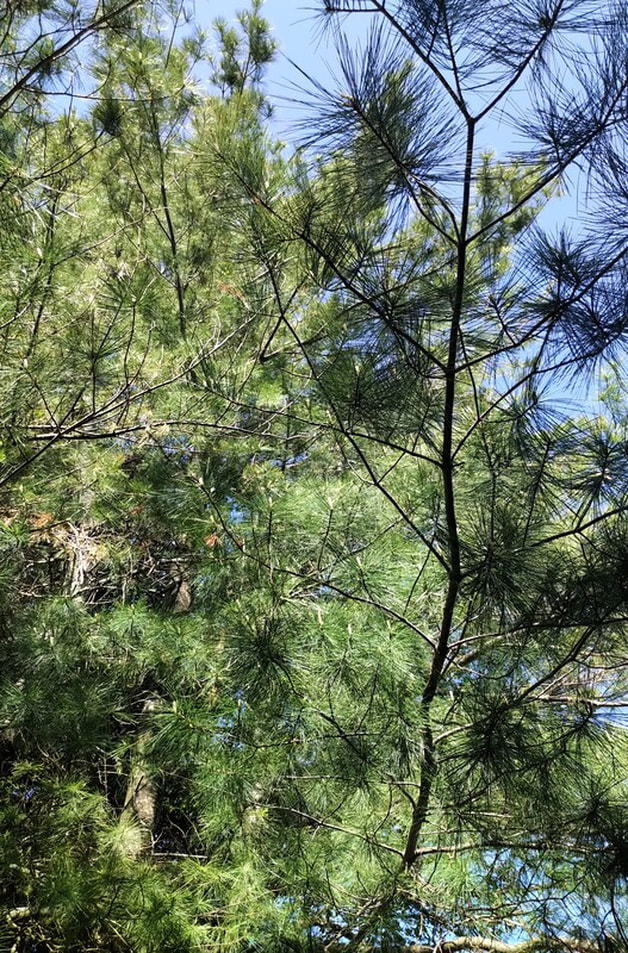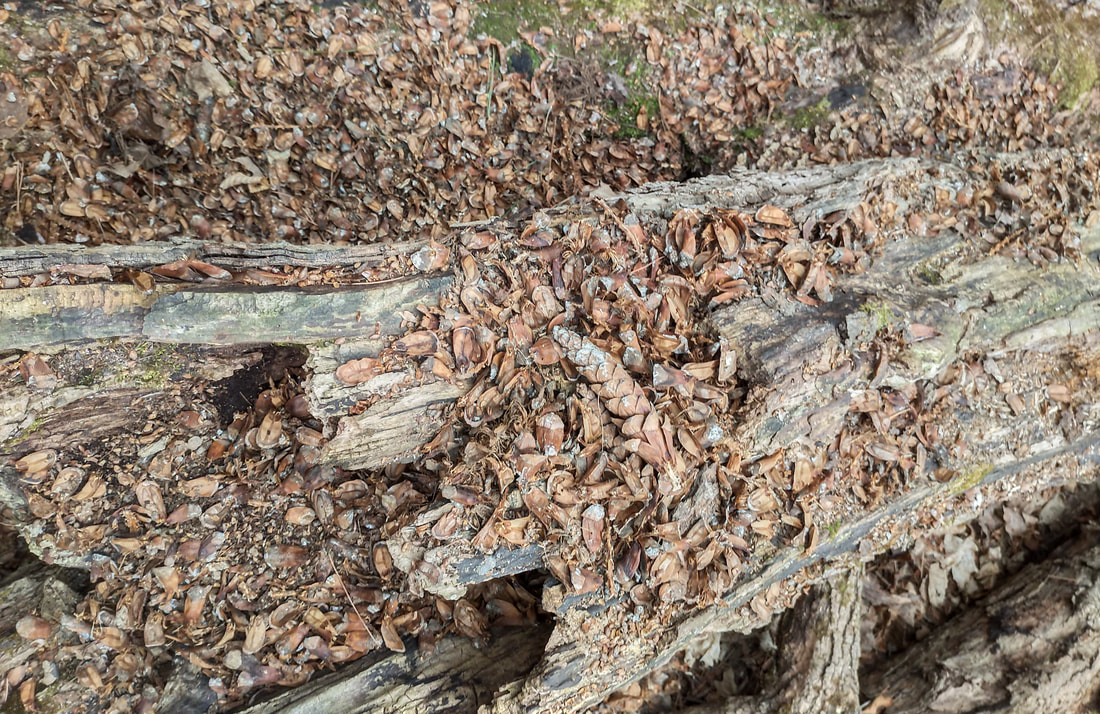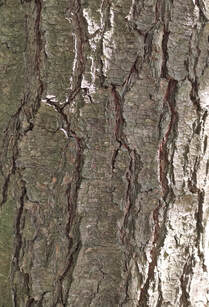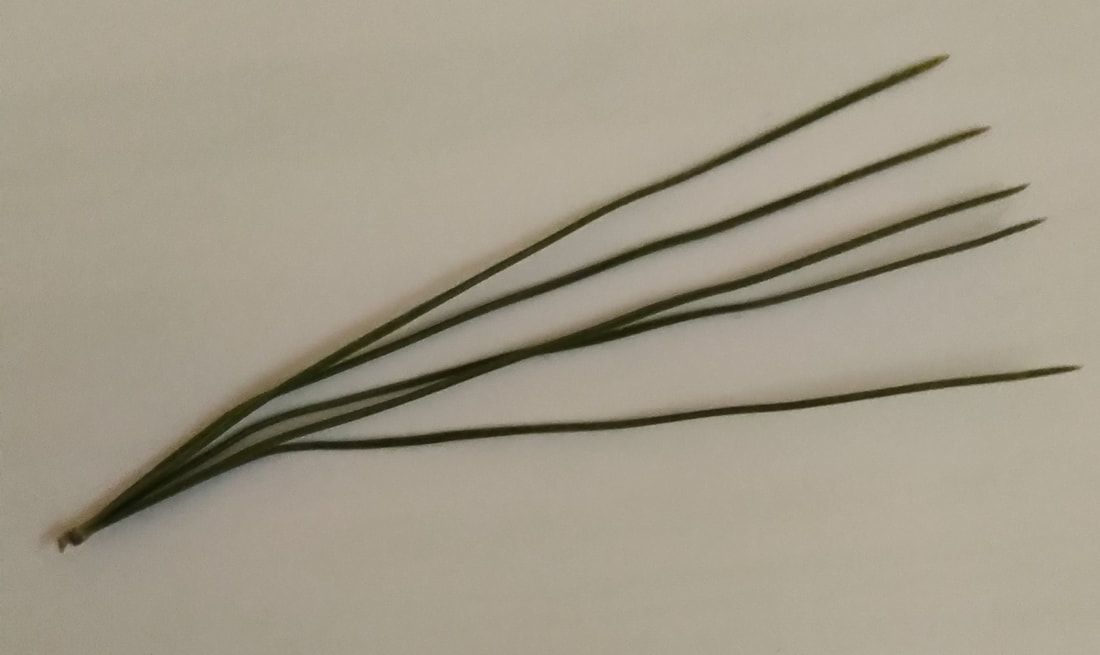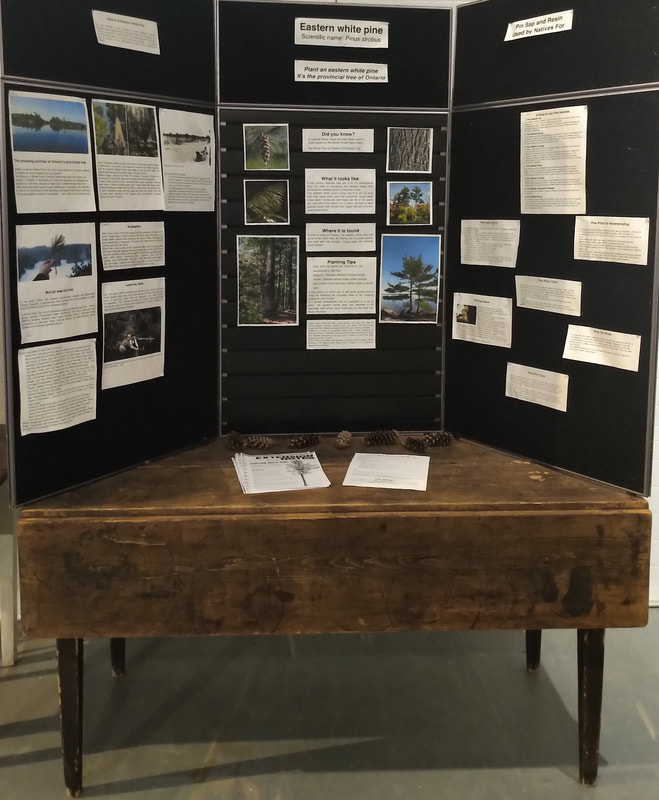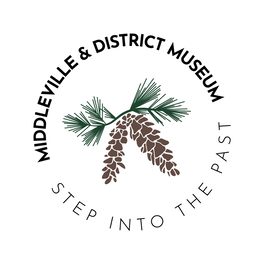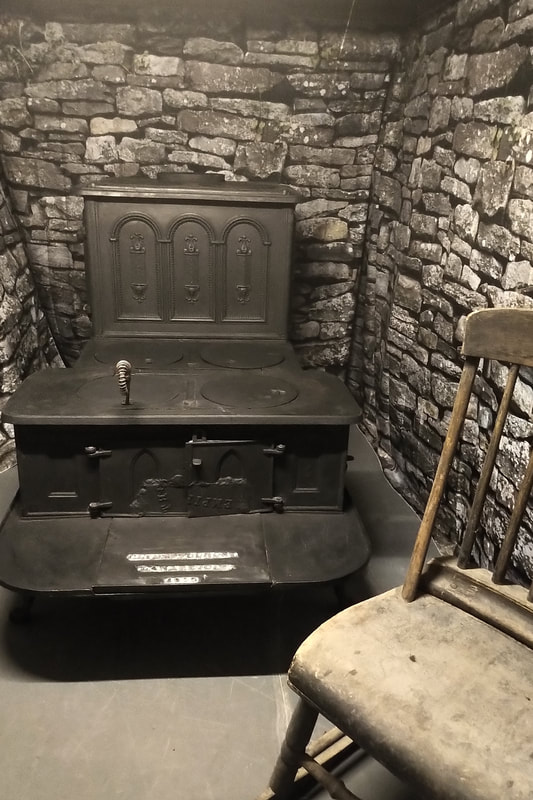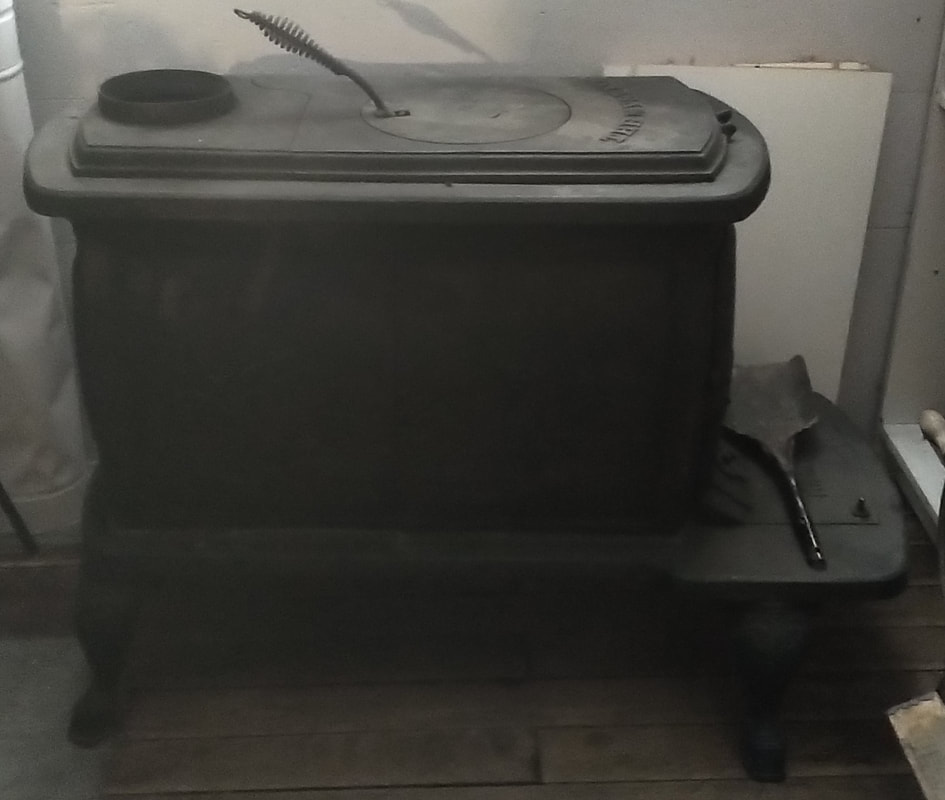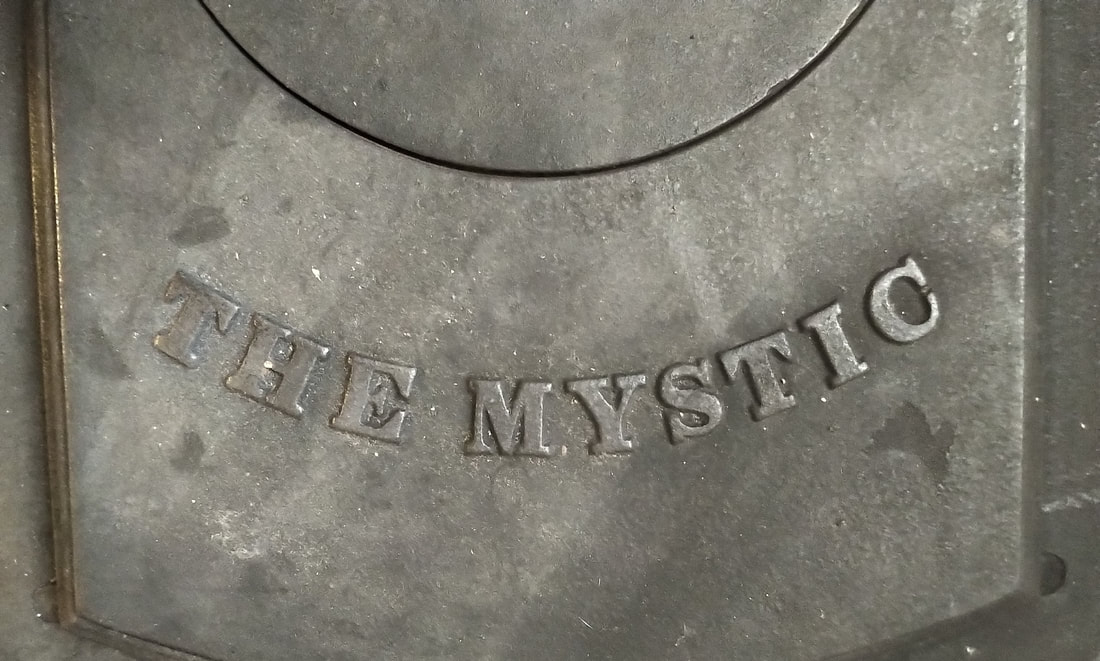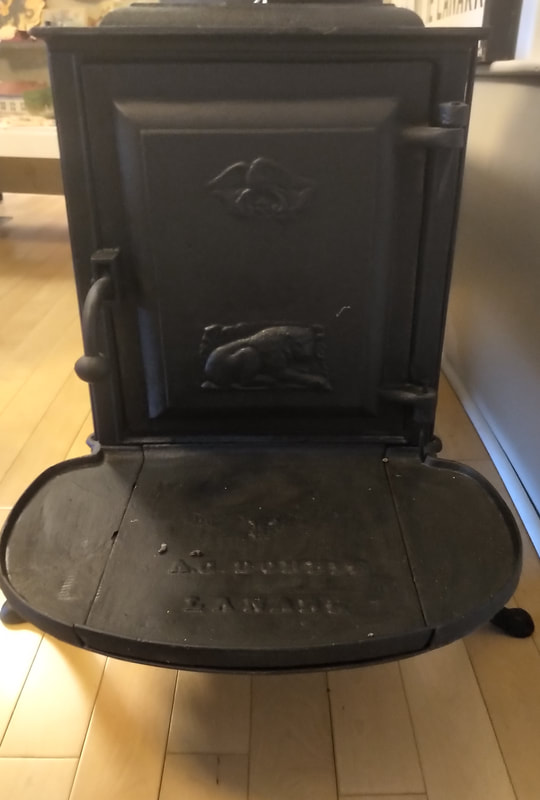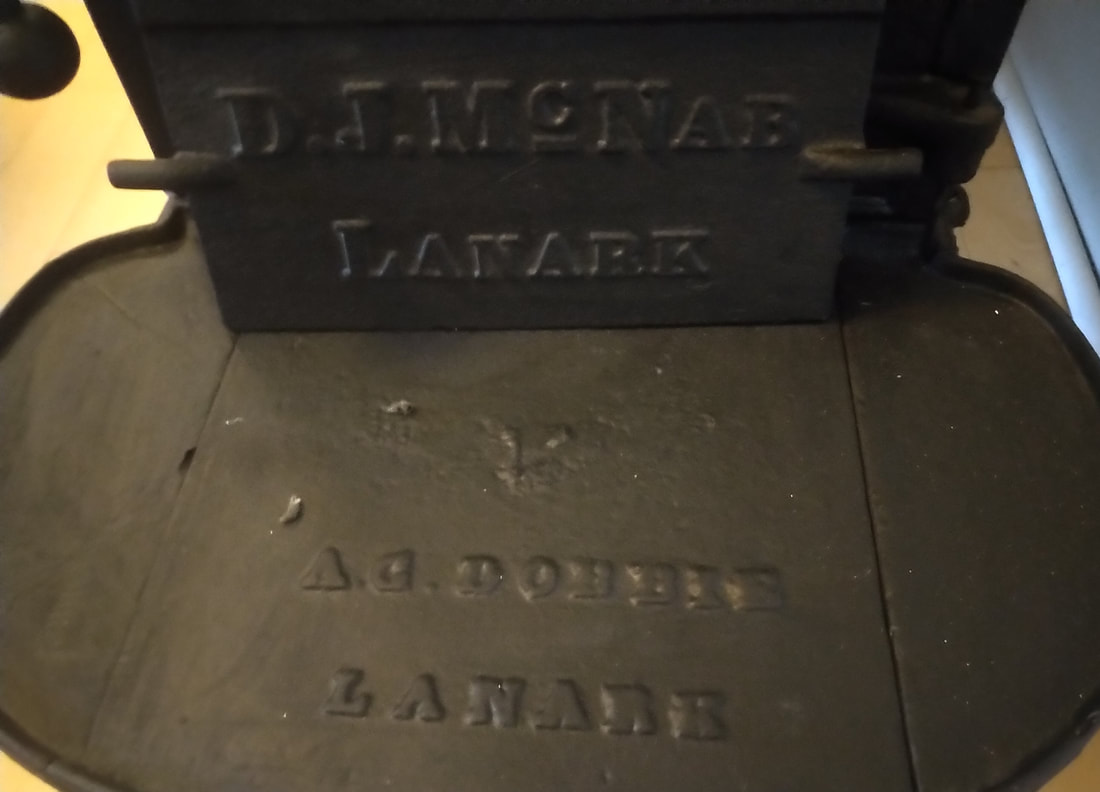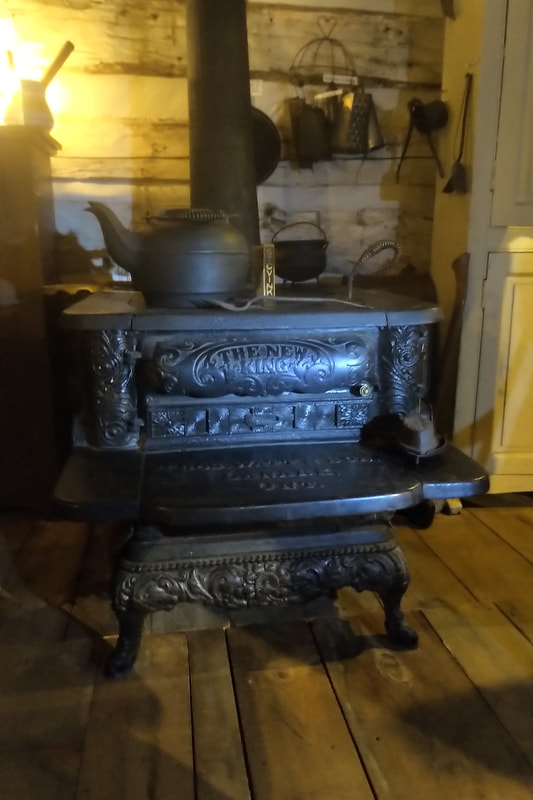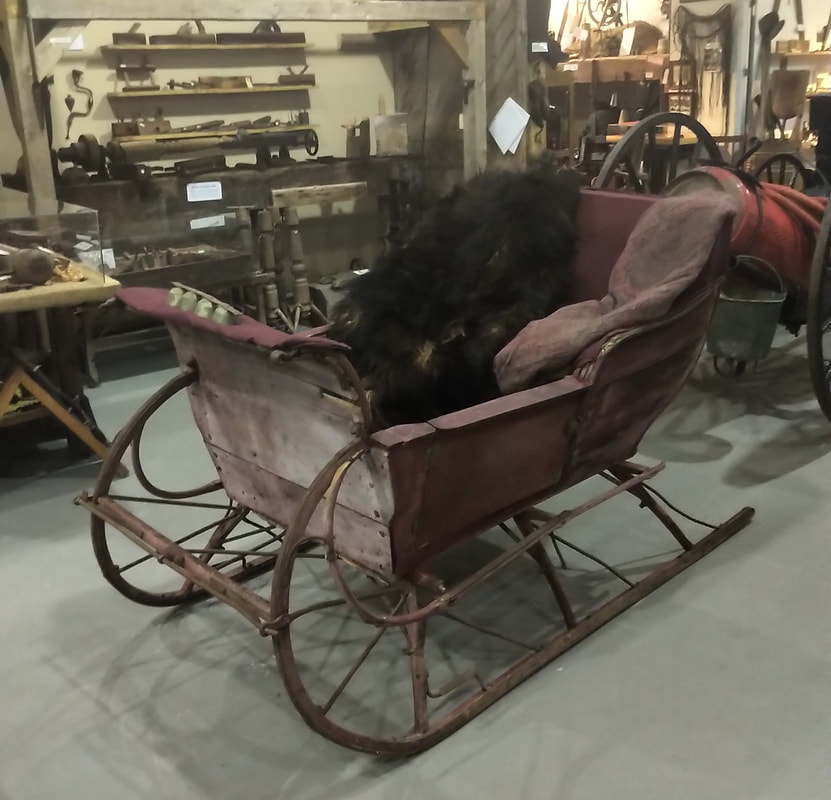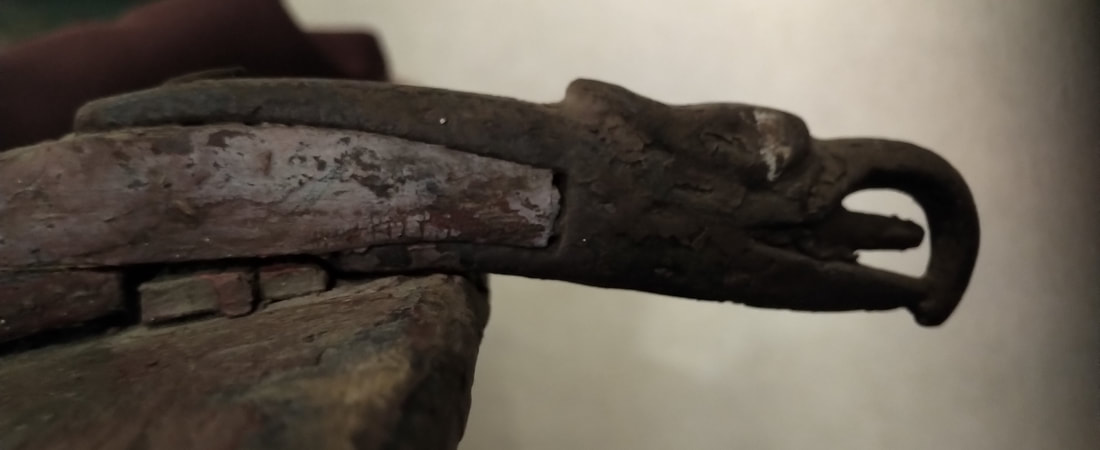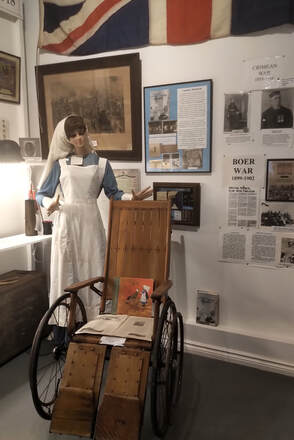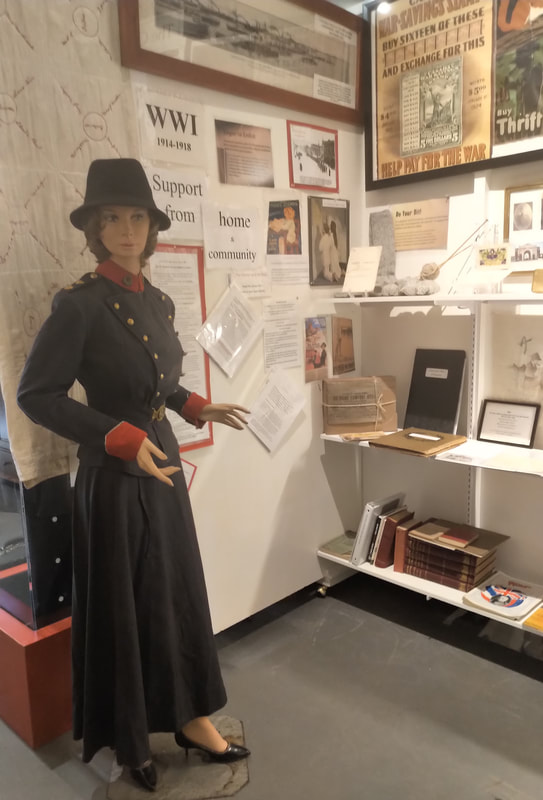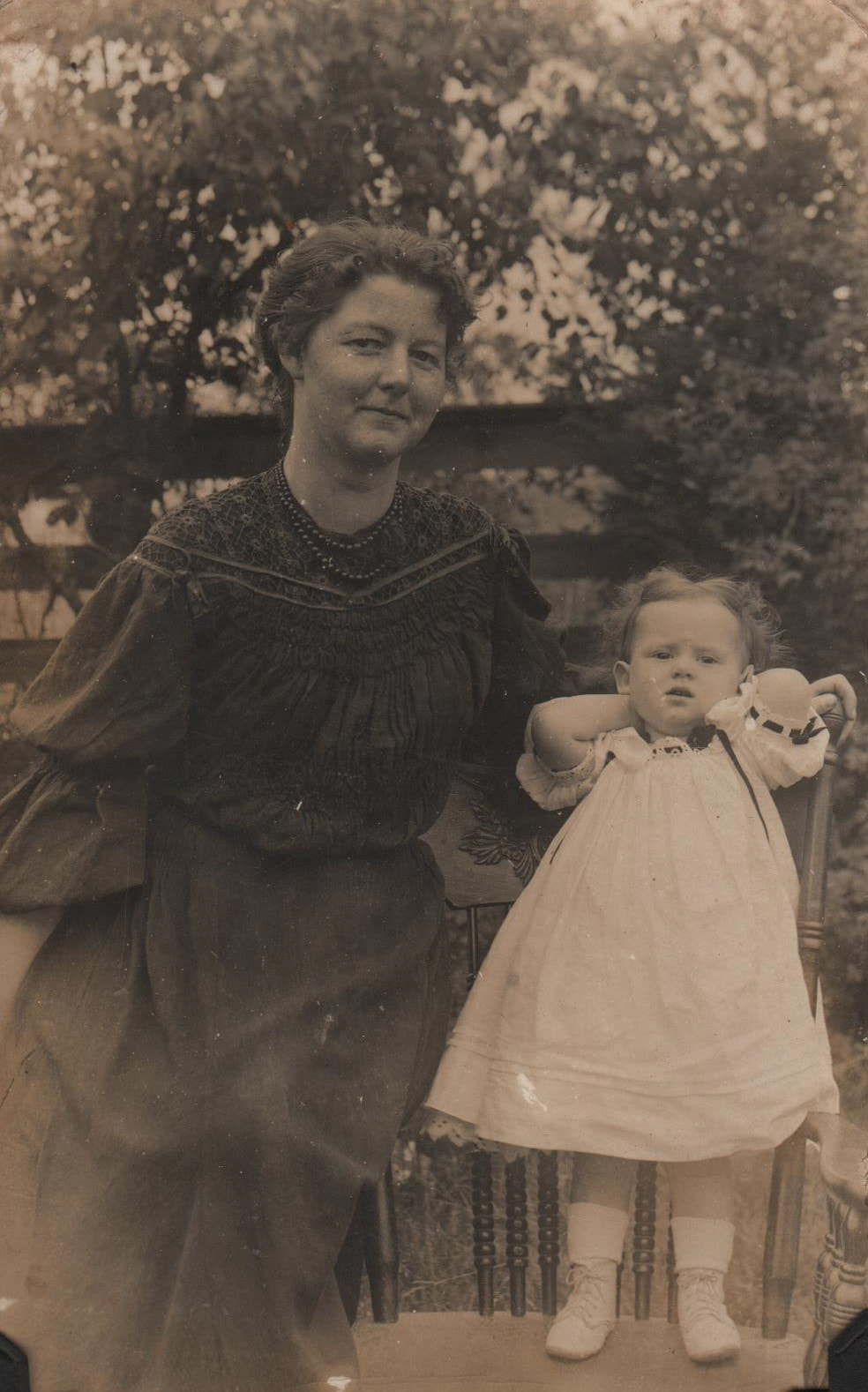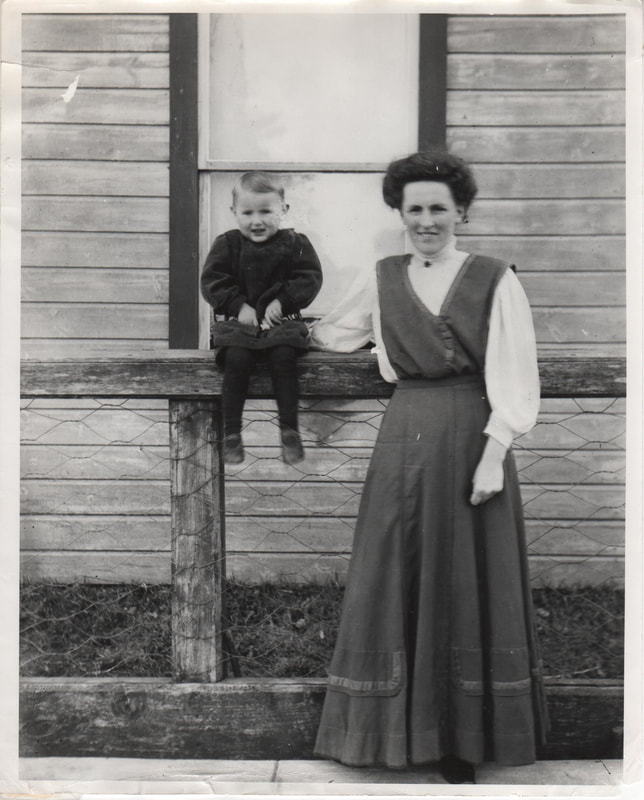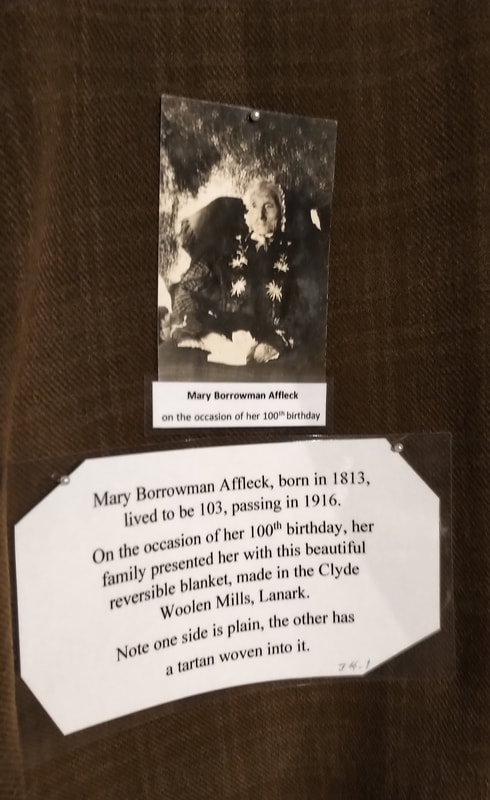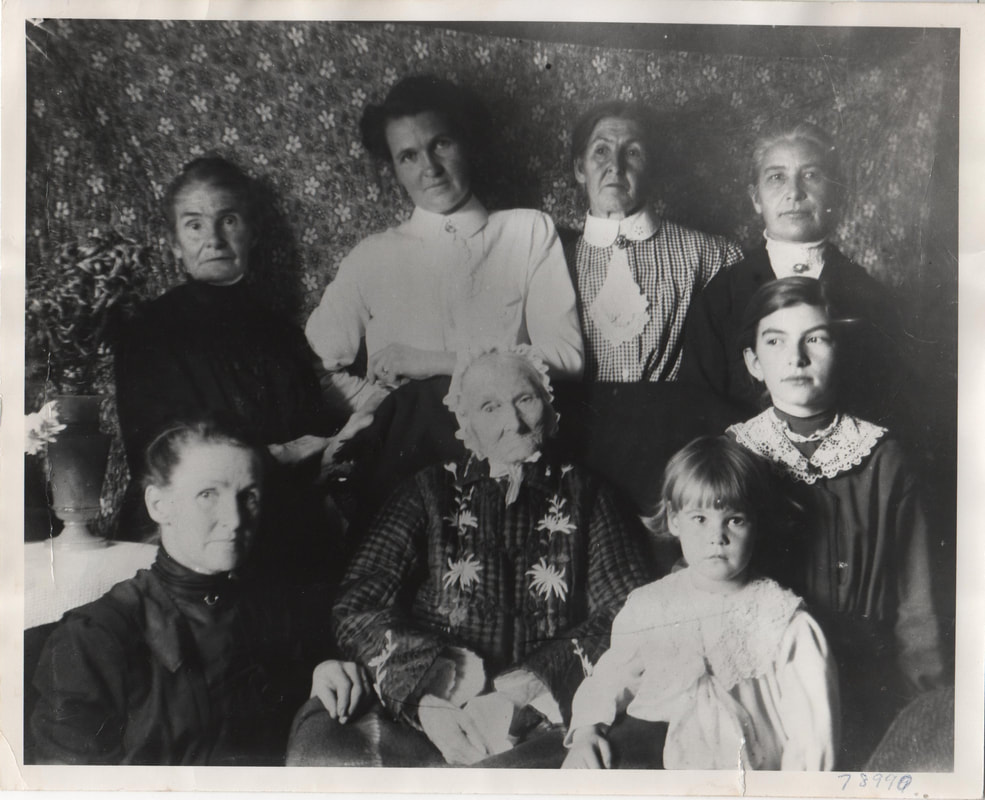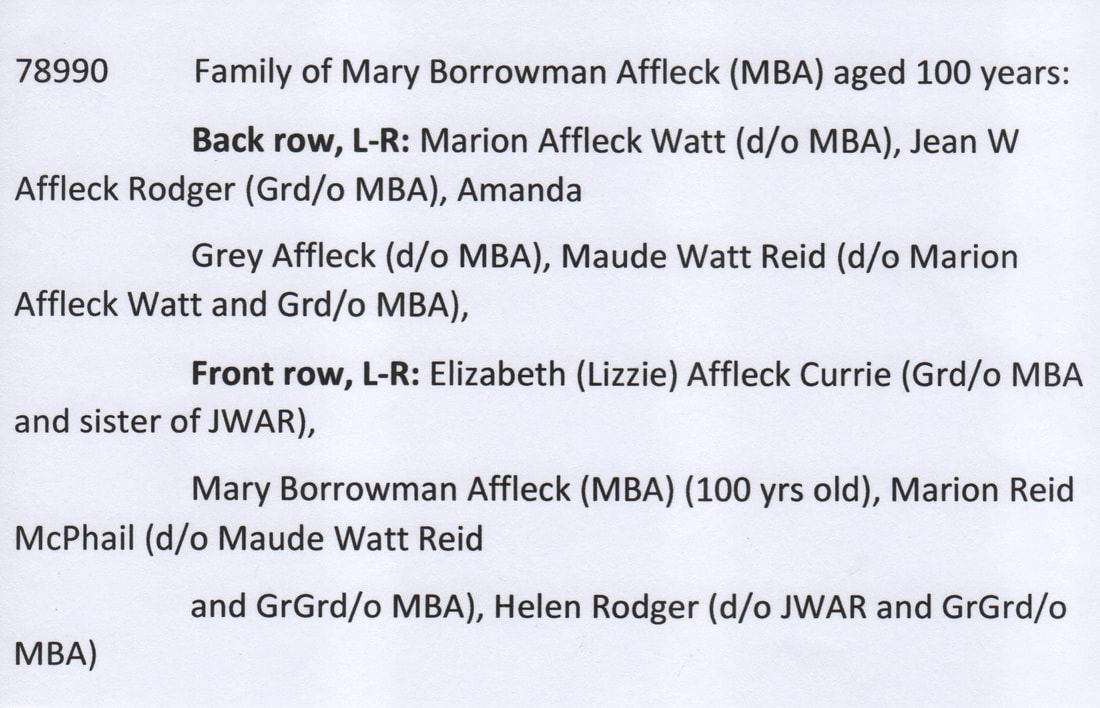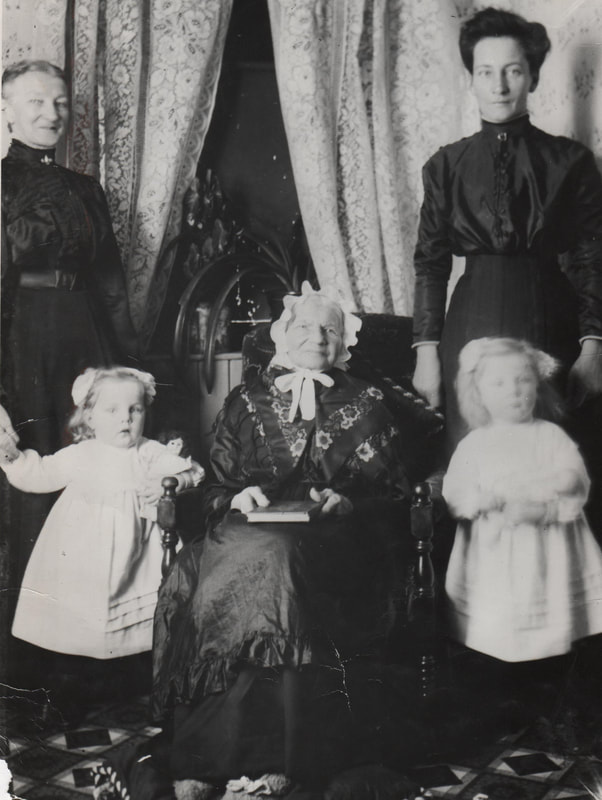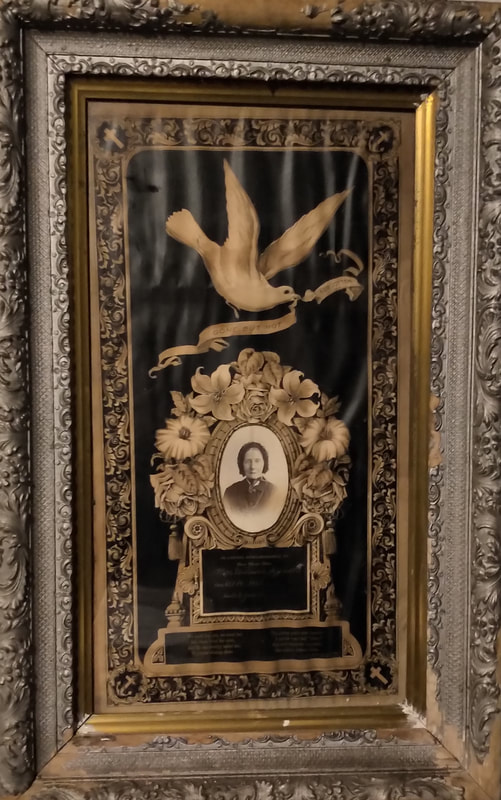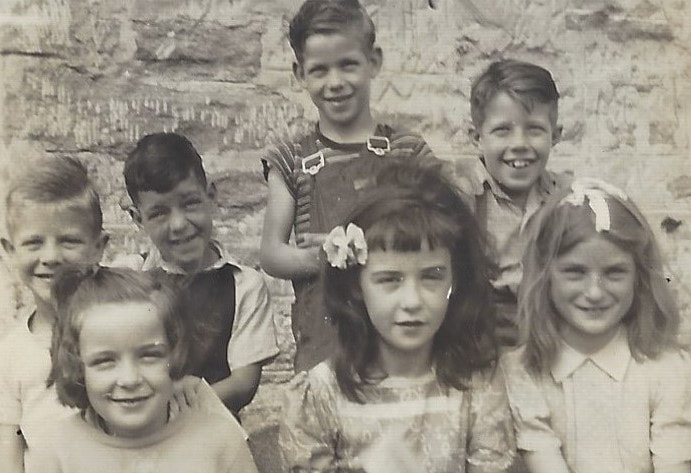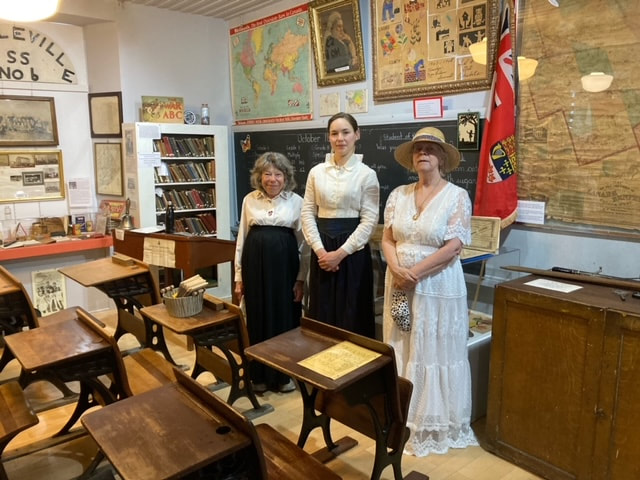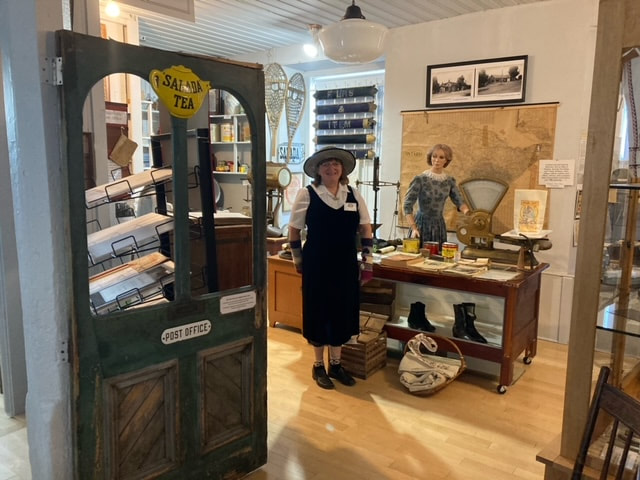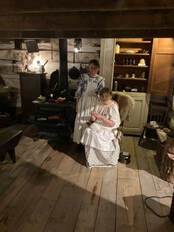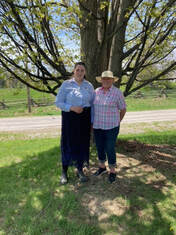|
Water sources determined where people chose to live. An available source of water was essential for a family’s survival. Many cabins were built in proximity to a spring of clear water. Water ‘switchers’ were often engaged to find a deep source of water where a well could be dug. In the mid 1800’s, the village of Middleville determined a promising central location to dig a well. The walls were well built by a stonemason to last for a century. Most of the village depended on this well for their household needs and to provide for their animals. Horses and cows were brought to drink from the wooden trough at the base of the pump. Long hollowed out poles reached down 41 feet. Children carried pails of water to the school on occasion and the pump was the source of water when a fire broke out in the area. The village pump was a gathering spot for community members following meetings, spots games and on hot days. News would be exchanged around the old pump like the modern day water cooler talk. Maintenance of the well was a community responsibility. Repairs and cleaning were attended to and testing was an annual ritual. The old village pump was used less and less as the village homes had dug wells of their own. Fewer horses were used on the roadways and eventually the old trough wasn’t needed as cars were the transportation of choice. After the main street was widened, the old pump was taken down and the well filled in during the late 1990’s. compiled from information by Claudia Smith Local author, Claudia Smith, wrote about the village pump in an article. Read about the village pump and more of Claudia's stories on one of our webpages. Claudia Smith Stories The Middleville and District Museum has three wooden pumps and the poles that reached deep into the earth to deliver water to a community. Be sure to check them out on your next visit.
0 Comments
Most local lakes had shared usage boats. Riven’s Lake, Horn’s Lake, Joe’s Lake, Clayton and Taylor Lakes were known to have such vessels tied up to a tree on the shore waiting for the next person needing transportation across a body of water. Joe Baye was known to keep a few boats on the point where he lived for fishermen to rent. According to Donald McNichol, when tall pine were abundant in the area, a boat would be made from a single pine log twenty six and a half feet long and two feet four inches wide It would be hollowed out with ends roughly hewed to resemble the bow and stern of an Indigenous bark canoe The Middleville and District Museum displays a dugout canoe made of basswood by Wallace Campbell in the early 1900’s. He trapped muskrat, fisher and mink on Campbell’s Creek as it made its way across his farm on its way to Mud Lake. One method of keeping mosquitoes at bay according to James McInnes was to cut four strips of cedar bark about three feet wide and bind these with three alder withes Light one end with a match and then the bundle would be placed in the bow of the boat with the lighted end protruding just inches above the water’s surface. The bark smoldered slowly with fragrant smoke wafting over the canoe to discourage mosquitoes A Cresset was an metal basket structure on a pole that could be attached to end of a boat or to a tree on shore Fishermen would light pine knots on fire in the Cresset to improve their visibility at night and also attract the fish. Be sure to drop by the Middleville and District Museum to view these relics of the local waterways.
Historically, Strawberry Socials have been an annual standard to bring communities together and celebrate the summer treat at its peak in June. The Middleville and District Museum is bringing the tradition back this year. In the past, many projects were funded through grassroots efforts at such social get-togethers. Both Clayton and Middleville Villages have stories of these efforts. How Clayton Village Got Its Streetlights The first Women’s Institute branch in the Clayton area was formed in 1910 with thirteen local members joining. A basket picnic was the first social event organized in Drummond Grove (where Linn Bower stands) with a program of games. Admission was 15 cents. Community picnics were held each year and served as fundraisers for projects. In July 1913, the newly formed Women’s Institute held an ice cream and cake social to raise funds toward the purchase of oil lamps to light the village streets. It was held in the Forrester’s Hall which had originally been built in 1873 to serve as the Presbyterian Church. The group raised enough money to order three streetlights. The lamps were ordered through Mr. John A. Erskine at the general store at a cost of $12.00 each. When the lamps arrived in October of that year, one was broken and so more funds had to be raised in subsequent years. In 1914, enough money had been raised to order two more lamps. The lamps were installed across from the grist mill on the bridge, at the top of the hill, at the community hall, at the end of the sidewalk at the Anglican Church and at the end of the street on the northeast end of the village (now Bellamy Mills Road). Mrs. Janet Rintoul moved a motion, seconded by Mrs. McNeill, to have steps built by Mr. Thomas Jackson at the base of each white painted lamp post to make the lighting of the lamps easier. The blacksmith, Mr. Michael Hogan, installed reflectors to show more light. Mr. Charles McNeil was hired at $15.00 to light the lamps each evening for the first year. Mr. James Johnston was paid $18.00 the next year and then Daniel Thompson was paid $21.00 in the third year. Later, Evangeline Thompson took over this responsibility. In 1915, an ice cream social raised $47.00. It was decided that this tradition would continue as an annual fundraising event. Compiled from Women’s Institute History 1910 – 2000 found in the Middleville and District Museum One of the Clayton Village Streetlights from 1913 was donated to the Middleville and District Museum by Margaret Munro. It will be going on display at the Museum this season. Two other Clayton Streetlights are displayed in the current Clayton Community Hall. Newspaper account of Middleville’s Strawberry Festival, 1955 “On Monday evening, the Strawberry Festival of St. Paul’s (Trinity) United Church, Middleville, June 27th, was held on Church grounds. From the road, the lighting arrangement made a very picturesque scene. There was a fair attendance with plenty of berries, cake, pie, tea etc. in good demand and the stand had its usual of purchases by the juveniles. The following program was presented: Mr. and Mrs. Arthur McNicol of Hoods contributed a lovely duet, ‘The Mansion on the Hill’ with Mrs. McNicol playing the accompaniment on the guitar. The Friendship Club Group gave two selections, ‘The Royal Telephone’ and ‘When You and I Were Young Maggie’. Messers Urquhart Proven on the violin and Lyall Mather on the organ gave two instrumental numbers.” The student minister from Tatlock, Mr. Glenn McPherson, contributed two readings including ‘Three Little Pigs’ to entertain the young folk. The clergy, Rev Hawley was chairman and reportedly gave a humorous recitation. Two films were also shown during the evening. Receipts were around $166.00 From a newspaper clipping included in Jean Rankin’s scrapbook, Volume 5 in the general library of the Middleville and District Museum Although times have changed since these picnics of long ago, Middleville and District Museum's Strawberry Social will feature delicious food, music, children's crafts and a great community get together. The dress code may differ, but the sense of community coming together will remain the most important thing! Hope to see you there. Check out our events page for details. Note: the Social will take place rain or shine thanks to our new large event tent for inclement weather.
Joe and Ellen (Slack) Baye lived on the 12th line of Lanark Township in the late 1800’s and early 1900’s. They made a home in a cabin they built on the shore of Taylor Lake in the community of Lloyd by the Narrows. Their grandson, William McIlquham wanted his grandfather’s violin and a canoe paddle to return to the area where his grandparents lived and raised their family. William is the son of Joe and Ellen’s youngest daughter, Julia Baye McIlquham. The violin had been found in an attic trunk belonging to Ellen’s family at Lansdowne, Ontario and passed down in the family to William. The story included with the violin indicates that it is the instrument that Joe learned to play on and had been given to him by his father, Peter Baye from the Cornwall Island area probably around 1868. Close inspection reveals a label inside the violin that reads: 'Antonius Stradivarius Cremonenfis Faciebat Anno 1716' It was made from the Stradevarius patterns. Hear a 'Antonius Stradivarius Cremonenfis Faciebat Anno 1716' play by clicking this link. This beautiful instrument will be of special interest to local community members who recall hearing stories of Joe Baye’s musical talent. He was renowned in the area for his ability to play a tune and often delighted audiences. A canoe paddle donated at the same time is an exact match to one made by Joe that has been on exhibit in the Museum for many years. The distinctive curve and craftsmanship is indicative of Joe’s woodworking skills. Included in William’s donation to the Museum were a few family photographs and old publications containing stories about his great uncle, Joe’s brother, Johnny Bay (Bey) who is credited with discovering gold at Bey’s Mine at Bey’s Point. Johnny travelled to the lower end of the Mazinaw River and raised his family there. Johnny Bay was also known for his musical and woodworking abilities. He was reportedly friends of the Whiteduck family of Ardoch, Ontario. The Museum has baskets on display that were made and sold by the Whiteduck family to area settlers. The Museum also has a genealogy for the Whiteduck family in its Family History Library. A second publication found in the donation was published by the Tyendinaga Council in 1960-61 in Deseronto, Ontario. A history compiled by Eleanor Herringtonin, 1921, gives information about Captain John Deserontyou and the Mohawk Settlement at Deseronto. These publications may be of interest to researchers looking for history of that area. A comprehensive genealogy was produced for William for both paternal and maternal sides of his family. He has donated a copy to the Museum. It complements the Baye family history already included in the Museum’s Family History Library. Be sure to drop by to see this exquisite new addition to the Museum’s Indigenous Exhibit featuring the Baye and Whiteduck families. The Middleville and District Museum received a $50 000 grant from the Regional Tourism Relief Fund in 2022 and the money allowed the Board to purchase items to enhance the outdoor space surrounding the Museum. A parking lot and circular drive was built to allow for event parking and to accommodate large vehicles such as buses and vans. Trees and shrubs were planted. Picnic tables including an accessible table along with park benches were acquired. The Museum is hopeful that hikers and cyclists will be able to use the facilities as part of their adventures when travelling local byways. The Township of Lanark Highlands is collaborating with the Museum by providing a portable washroom on the grounds to be used when the Museum is closed. The washroom is wheelchair accessible. A large tent was purchased to provide shelter during events when inclement weather occurs. The opening weekend festivities went on as planned with the musicians and display tables all set up inside the tent for the public to enjoy. It provided a welcoming and comfortable space. It will be used for several events throughout the season and allows for events to go ahead regardless of a little rain. The acquisition of additional land from Lionel Easton allowed the Museum to begin the process of developing the outdoor space around the Museum. This year, a garden has been planted to recognize this gesture and fittingly it is on the same ground that Lionel's late wife, Audrey Easton once tended a flowerbed. It is the Middleville and District Museum's hope that the grounds around the Museum will be used by community members and Museum visitors. It provides a lovely rest stop for hikers and cyclists as well as a space where community can gather. Drop by to check out the ongoing development of this space.
Up until 1900, all farmers received the same price for their milk. They were paid by the weight of their milk. This was known as the ‘pooling system’. This encouraged farmers to supply the cheese factory with as much milk as possible. Milk wasn’t shipped on Sundays so this resulted on low cheese scores on Monday as the milk was not as fresh. In June 1900, 15 600 pounds of milk was delivered to the Middleville Cheese Factory in a day. Dr. Stephen Mouton Babcock (1842-1931), an American Agricultural Chemist had developed a precise method for determining the butterfat content of milk in 1890. He donated his test to the dairy industry rather than obtaining a patent and profiting from it on his own. A small sample of each farmer’s milk was ladled into a numbered bottle for butterfat content testing purposes. A Holstein was able to produce milk with a butterfat content of 4%. Middleville Cheese Factory Report of 1933 reported 770 042 delivered to the factory by local patrons. The average price paid to farmers for their butterfat during the season was 17 cents per pound. The Middleville and District Museum has many artifacts used over the decades in milk testing and production. There are many booklets and pamphlets on techniques of milk, butter and cheese production in earlier days. Be sure to browse the exhibit on your next visit.
For centuries, stands of white pine covered much of north eastern North America along with other tree species. White pine grows tall and straight. In fact, the white pine is the tallest tree that grows on the continent. White pines have been known to live for 450 years and grow to heights of 230 feet in the air. Few branches grow on the bottom two thirds of the tree as the top of the tree rises toward the sunshine. It prefers sandy, moist loam for soil. Underneath the pine, the needles drop off and create a bed around the base of the tree. These needles are acidic and create a layer that smothers other growth. This layer of needles serves as an adaptive feature. A grove of pines smothers other growth around the trees and allows them to flourish by choking out other species. That allows large stands of these towering giants to thrive. The thick canopy created by the tops of the trees creates a shady environment on the ground. Wildlife including squirrels are quite at home under the pines and make use of the pine cones sometimes collecting the shells or scales in a midden to store them for another day. Look carefully for a stock pile of pine cone scales on your next hike through a pine stand. A sassy squirrel may be nearby ready to scold intruders Today, about one percent of old growth forests remain. By the 1830’s, white pine and other trees were being logged extensively in Ontario. In 1842, demand for square timber doubled and the white pine was especially sought after because of the tall, straight growth. Special barges were built to transport the maximum number of square logs at a time. The British Royal Navy required long, straight timber for mast building. One report cites 5 850 000 feet were sold annually. In the mid 1860’s, 1 541 000 feet of timber went down the Mississippi. In 1984, the pinus strobus, white pine species became the official Provincial tree for Ontario. This gives the pinus strobus some protection. There are rules around the harvest of this species. If you want to view the tallest white pine in Ontario, Gillies Grove, Arnprior claims a white pine that soars to a height of 150 feet. That tree has endured through recent history and stands as a testament to a time gone by. The Middleville and District Museum has chosen to add a white pine branch to its logo because of this tree’s historical significance to the area. Many local communities were sustained by the logging industry. The Museum has a Herron Mills exhibit featuring the artifacts of logging days. A special display outlining the history and significance of white pine can be enjoyed by visitors. Be sure to find out more when you visit the Museum this season.
An old artifact is a new resident of the Middleville and District Museum. Nestled into a cozy alcove sits a special addition to the Museum’s Collection. A call from Michael and Petra Sidon of Schomberg, Ontario (west of Newmarket) began a journey home for a beautiful old stove from their house to Lanark Highlands. The Sidons delivered the stove just in time for it to be included in the Museum’s new season. This homecoming for the stove is confirmed by the label stamped into the iron that reads: Clyde Foundry, Lanark, CW 1858. The stove was manufactured when Ontario was still known as CW (Canada West). The Clyde Foundry is believed to have been built on the banks of the Clyde River in Lanark Village on Clyde Street which was an unofficial street just off Mill Street. An advertisement says it is located beside Young's sawmill which was located in that area. According to an article in the Lanark Era of 1896, the Clyde Foundry was built in 1863 by James Dobbie. This is after the stove was manufactured so it is likely that the foundry was officially built to accommodate the growing stove business. After the death of James in 1869, his son, Alexander Gardiner (A.G.) Dobbie, took over the management of the foundry until selling to Thomas Watt and son (James). Thomas had 20 years of experience in the foundry business. The foundry produced stoves, ploughs and did some repairs. The ‘Fire King’ was the first brand manufactured by James Dobbie. It boasted an extra large fireplace and was reported to be a ‘very good baker’. Thomas Watt made several models of stoves. ‘Reliance, Defiance and Mystic’ were cooking stoves. The Defiance was described as a ‘low-oven stove with large fireplace and a good draught system’. The Reliance was similar with an elevated oven-stove and marketed as ‘second to none for cooking purposes’. The ‘Mystic’ was available in two sizes: ‘25 and 31 with swinging covers, sides in two sections and said to be an excellent heater’. The stoves manufactured at the Clyde Foundry were made of No 1 Scotch Pig Iron. The guarantee for every stove extended to cover the first heating. Any cracks as a result of the first heating would result in a full stove replacement. Imported stoves had no guarantee so were a more risky purchase. Even then, it paid to shop locally. The Middleville and District Museum has five old stoves with three being currently on display. The cabin has a Thomas Watt stove with swinging doors opened by a pedal at the bottom. The schoolroom includes a stove that was used to keep pupils warm throughout winter months. Be sure to take note of these old iron standards on your next visit to the Museum. The Portland Cutter donated by the Moulton family last fall has taken its place in the Museum to delight visitors who can envision the family wrapping up in buffalo robes and beckoning the horse to carry them over the snowdrifts with sleighbells chiming as they made their way to a neighbours home. Take note of the unusual side doors and look for the eagle head rein holder. The arrival of a uniform worn by Janet James in World War 1 inspired a new focus on the Bluebird Nurses of WW1. The Museum already had her Bluebird nursing uniform on display. Her trunk, uniform and items of memorabilia from her nursing career are great additions to the exhibit. Be sure to check out the new artifacts and information about Canada’s Bluebirds. Come out and see these new additions (and some old favourites) in the Middleville and District Museum on opening day, Saturday, May 20th. The festivities begin at noon with treats and visitors can enjoy live music during the afternoon. Hope to see you there.
In Ancient times, festivals were held to honour the mother goddesses Rhea and Cybele. 'Mothering Sunday' became a time for parishioners to return to the Church in their home vicinity for special services. Over time, children began presenting their mothers with flowers as tokens of appreciation. In the 1870's, there was a 'Mother's Day' Proclamation' asking mothers to promote world peace. In 1905, Ann Jarvis died and her daughter, Anna decided to recognize her mother's life long work to improve the lives of mothers and thereby their children. She worked to pay tribute to her mother and in 1914, an act of Congress recognized a day to celebrate mothers. This had been a wish of Anna's mother. That was the birth of the Mother's Day we celebrate today. Mothers were often recognized for their longevity and tributes were paid by taking generational pictures. Ornate portraits with commemorations of a mother's life were often framed after a mother had died such as the one for Grace Patterson Affleck. This commemorative portrait reads: In Loving Memory of Our Dear One Mrs. William Affleck Died Oct 16, 1901 Aged 85 years. "We loved her, yes, we loved her, but Jesus loved her more, and He has sweetly called her, to yonder shining shore. The golden gates were open a gentle voice said, "come" and with farewells unspoken, she calmly enter As we remember our mother's this Mother's Day, we reflect on the important contributions mothers have always made. Happy Mother's Day.
The Middleville and District Museum has artefacts and events that appeal to all ages. This season, the Museum will welcome two groups of youngsters for tours and activities. A local Scout group will be at the Museum for a tour and some activities in mid May. In June, a school group from Carleton Place will have a fun day of activities at the Museum. The 2nd Almonte Beavers group will attend in the evening for a special tour designed just for them. They will do a craft activity and conduct their regular program at the Museum. The school group will enjoy outdoor games, learning activities, a craft and a picnic lunch. For groups of students and youth, the Museum is able to provide a craft space and outdoor activities as well as using the schoolhouse room with desks for a customized lesson. Youth learn many different aspects of life in the early 1800's through to the early 1900's. Volunteers provide information and lead activities. The expanded outdoor space allows for use of the picnic area. New picnic tables and benches provide ample seating and lunch areas for larger groups. A new bus circle allows for easy access by larger vehicles. If you know a group of youngsters interested in history, let them know the Museum has something to offer. Contact the Museum volunteers through our e-mail or social media to discuss possibilities. [email protected] Be sure to check out the Educational Resources and Kid's Corner webpages on the Museum's website to find information and activities.
|
AuthorThis journal is written, researched, and maintained by the volunteers of the Middleville Museum. |
